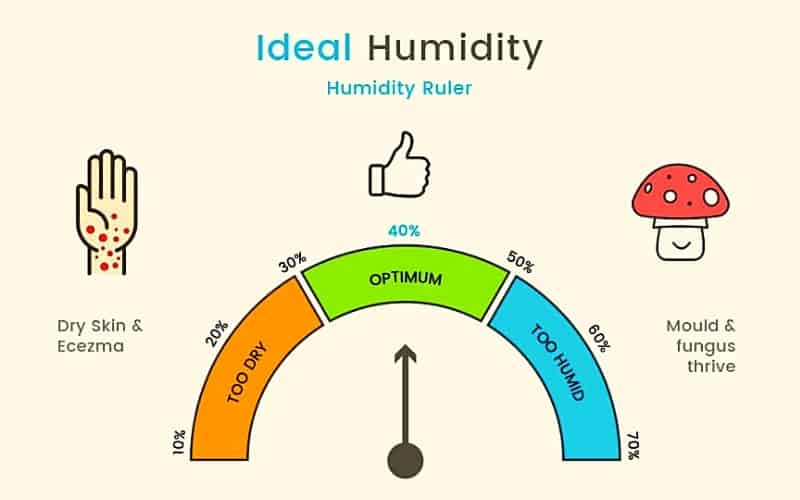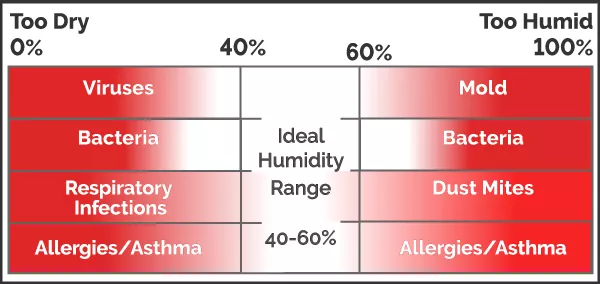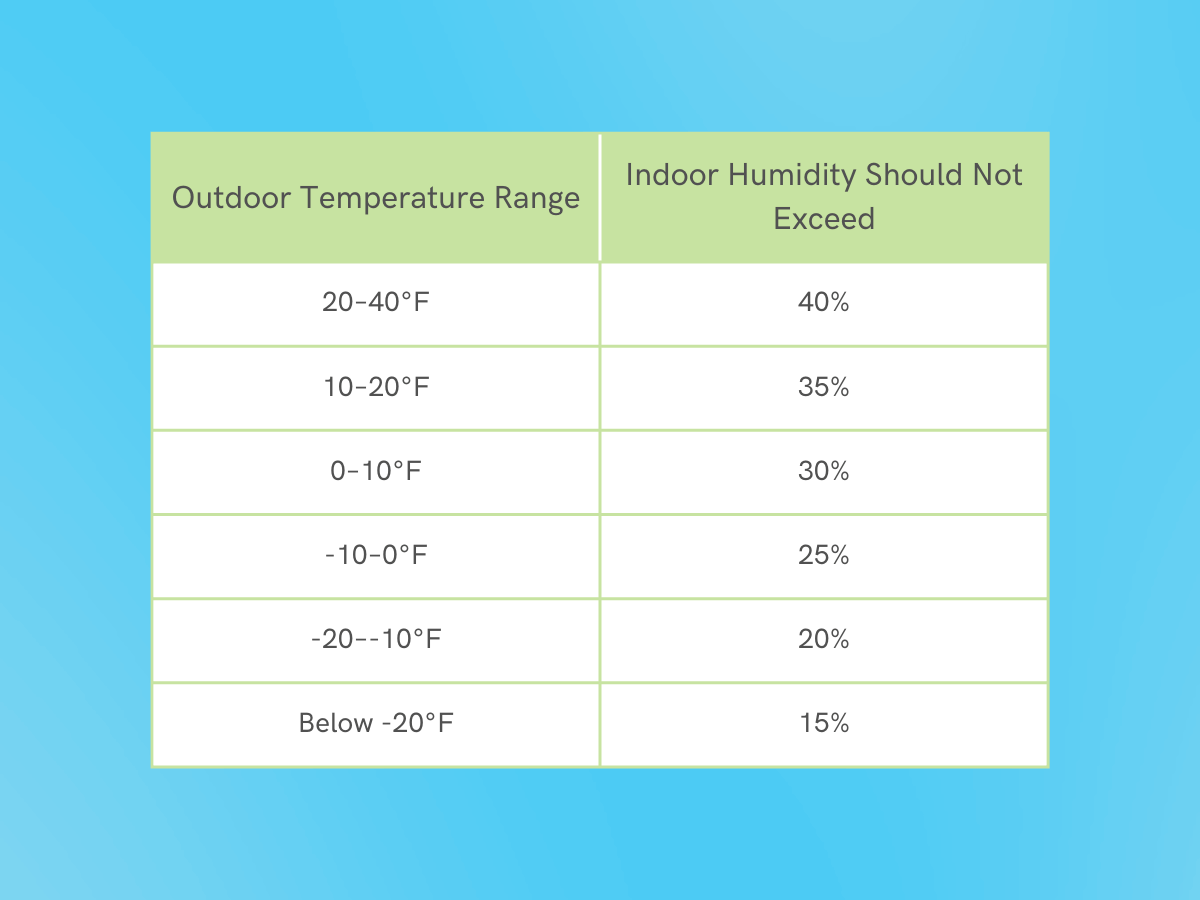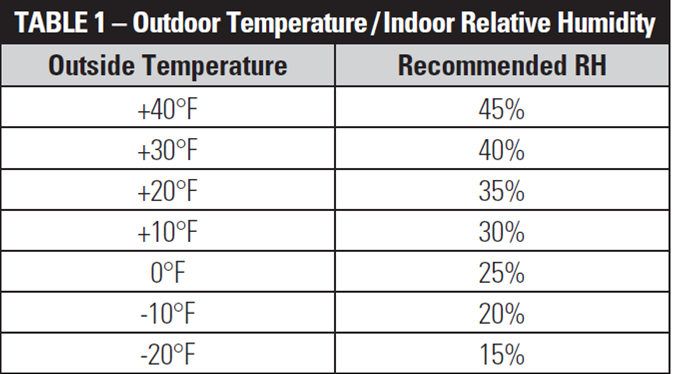What Should The Indoor Humidity Level Be

Maintaining the right indoor humidity level is crucial for your health, comfort, and the preservation of your home. Too much or too little moisture in the air can lead to a variety of problems, from mold growth and respiratory issues to dry skin and damaged furniture.
What is Humidity?
Simply put, humidity is the amount of water vapor present in the air. We often talk about relative humidity, which is the percentage of moisture in the air compared to the maximum amount of moisture the air can hold at a given temperature. Warm air can hold more moisture than cold air. Think of it like this: air is a sponge, and water vapor is the water it can absorb. A warmer sponge can absorb more water.
The Ideal Indoor Humidity Level
The ideal indoor humidity level generally falls between 30% and 50%. This range provides a comfortable environment for most people and helps prevent the growth of mold and other harmful microorganisms. During the winter months, especially in colder climates, you might need to aim for the lower end of this range (30-40%) to avoid condensation on windows and walls, which can lead to mold growth. In the summer, you can aim for the higher end of the range (40-50%).
Why is this range important?
- Comfort: When humidity is too high, sweat evaporates slowly, making you feel sticky and uncomfortable. When it's too low, your skin and nasal passages can dry out, leading to irritation.
- Health: High humidity promotes the growth of mold, dust mites, and other allergens, which can trigger allergies and asthma. Low humidity can exacerbate respiratory problems and increase susceptibility to colds and viruses.
- Home Preservation: Excessive humidity can cause wood to rot, paint to peel, and metal to corrode. Low humidity can cause wood to crack and furniture to warp.
Consequences of Humidity Levels Outside the Ideal Range
High Humidity (Above 50%)
When indoor humidity exceeds 50%, you may experience the following:
- Mold and Mildew Growth: Mold thrives in damp environments, leading to musty odors, structural damage, and potential health problems.
- Dust Mite Infestation: Dust mites, a common allergen, thrive in humid conditions.
- Increased Allergy and Asthma Symptoms: High humidity can worsen allergies and asthma by promoting the growth of allergens.
- Condensation: Moisture can condense on windows, walls, and other surfaces, leading to water damage and mold growth.
- Uncomfortable Feeling: The air feels heavy and sticky, making you feel hotter than the actual temperature.
Low Humidity (Below 30%)
When indoor humidity falls below 30%, you may experience the following:
- Dry Skin and Irritated Eyes: Low humidity can strip moisture from your skin, leading to dryness, itching, and cracking. It can also dry out your eyes, causing irritation and discomfort.
- Dry Nasal Passages and Increased Susceptibility to Infection: Dry nasal passages can make you more susceptible to colds, flu, and other respiratory infections.
- Cracked Wood Furniture and Floors: Low humidity can cause wood to dry out and crack, damaging furniture, floors, and other wooden structures.
- Static Electricity: Dry air promotes static electricity, leading to annoying shocks when you touch metal objects.
- Aggravated Respiratory Conditions: Low humidity can worsen asthma and other respiratory conditions.
How to Measure Indoor Humidity
The easiest way to measure indoor humidity is with a hygrometer, also known as a humidity meter. These devices are relatively inexpensive and readily available at most hardware stores or online retailers. Some thermostats also have built-in hygrometers. Place the hygrometer in a central location in your home, away from direct sunlight or drafts, for an accurate reading. Monitor humidity levels regularly, especially during seasonal changes.
Controlling Indoor Humidity
There are several ways to control indoor humidity, depending on whether it's too high or too low.
Reducing High Humidity
- Use Air Conditioners: Air conditioners remove moisture from the air as they cool it. Think of refrigerant as the 'blood' of your AC system, carrying heat from inside to outside, thus also removing moisture as a byproduct of the cooling process.
- Use Dehumidifiers: Dehumidifiers are specifically designed to remove moisture from the air. Choose a dehumidifier with the appropriate capacity for the size of your space.
- Improve Ventilation: Ensure adequate ventilation in your home by opening windows (when the outdoor humidity is lower), using exhaust fans in bathrooms and kitchens, and ensuring proper airflow throughout your home.
- Fix Leaks: Repair any leaks in your roof, plumbing, or windows to prevent moisture from entering your home.
- Dry Clothes Outdoors: Avoid drying clothes indoors, as this adds moisture to the air.
- Take Shorter, Cooler Showers: Hot, steamy showers can significantly increase indoor humidity.
- Cover Aquariums: Uncovered aquariums release moisture into the air.
- Properly Vent Appliances: Make sure your clothes dryer and other appliances are properly vented to the outside.
Increasing Low Humidity
- Use Humidifiers: Humidifiers add moisture to the air. Choose a humidifier that is appropriate for the size of your space and clean it regularly to prevent mold growth.
- Boil Water: Boiling water on the stove can add moisture to the air. However, be careful not to leave the stove unattended.
- Take Longer, Hotter Showers: While not ideal, longer, hotter showers can temporarily increase humidity levels.
- Place Bowls of Water Around the House: Allow water to evaporate naturally, adding moisture to the air.
- Keep Houseplants: Plants release moisture into the air through transpiration.
Tips for Maintaining Optimal Humidity Levels
- Monitor humidity levels regularly with a hygrometer.
- Adjust your humidity control methods based on the season and weather conditions.
- Maintain your HVAC system by changing air filters regularly and scheduling routine maintenance.
- Address any water leaks or moisture problems promptly.
- Consider using a whole-house humidifier or dehumidifier for consistent humidity control throughout your home.
- Be mindful of activities that can affect humidity levels, such as cooking, showering, and doing laundry.
- Properly insulate your home to help maintain consistent temperature and humidity levels.
Common Misconceptions About Humidity
There are a few common misconceptions about humidity that are worth addressing:
- "I can tell if the humidity is too high or low just by how I feel." While you may be able to sense extreme humidity levels, it's difficult to accurately gauge the actual humidity percentage without a hygrometer.
- "Running the AC is enough to control humidity." While air conditioners do remove moisture from the air, they may not be sufficient to maintain optimal humidity levels, especially in humid climates.
- "Humidifiers are only necessary in the winter." Humidifiers can also be beneficial in the summer if you live in a dry climate or if your air conditioner removes too much moisture from the air.
- "Dehumidifiers are only necessary in the summer." Dehumidifiers can be useful year-round in basements or other areas prone to dampness.
The Role of Ventilation
Ventilation plays a crucial role in maintaining healthy indoor humidity levels. Proper ventilation helps to remove excess moisture from the air, preventing the buildup of mold and other allergens. It also helps to circulate fresh air throughout your home, improving air quality and reducing the concentration of pollutants. Open windows and doors when the outdoor humidity is lower than the indoor humidity. Use exhaust fans in bathrooms and kitchens to remove moisture generated during showering and cooking. Consider installing a whole-house ventilation system for continuous air exchange.
Humidity and Different Climates
The ideal indoor humidity level can vary depending on the climate you live in. In humid climates, you'll likely need to focus on reducing humidity levels to prevent mold growth and discomfort. In dry climates, you may need to focus on increasing humidity levels to prevent dry skin and respiratory problems. In mixed climates, you'll need to adjust your humidity control methods based on the season and weather conditions.
Conclusion
Maintaining the right indoor humidity level is an ongoing process that requires monitoring, adjustment, and a proactive approach. By understanding the ideal humidity range, the consequences of imbalanced humidity, and the methods for controlling it, you can create a healthier, more comfortable, and more sustainable living environment for yourself and your family. Invest in a good hygrometer, pay attention to your home's needs, and take steps to maintain optimal humidity levels year-round.










